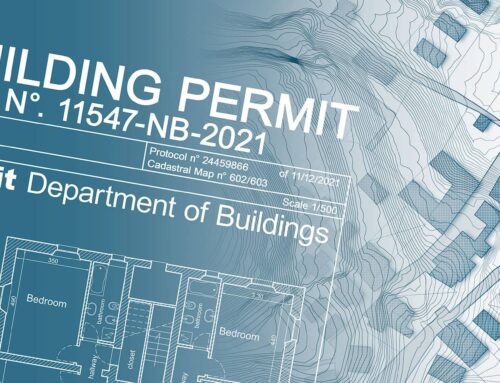
Why Aurora’s Suburban Growth Matters to Homebuyers
Aurora’s suburbs are no longer just a quiet extension of Denver—they’ve become a dynamic region where new housing, schools, and amenities converge to create real value for homebuyers. From mixed-use developments sprouting along Colfax Avenue to expanding charter and district schools easing overcrowding, families now find an array of thoughtfully planned neighborhoods built for modern living. Add upgraded trails, retail corridors like Parker Road, and faster light-rail connections, and it’s clear why buyers are turning their sights east. In this article, we’ll unpack the key growth drivers reshaping Aurora and explore what they mean for anyone looking to plant roots in this rapidly evolving community.
Key Takeaways
- Ensure financial readiness by assessing income, debts, and savings, and prepare for a 20% down payment or explore assistance programs.
- Select a real estate agent based on recommendations and their understanding of Colorado’s market dynamics.
- Obtain a mortgage pre-approval to establish your budget and make you a more attractive buyer to sellers.
- Choose a location considering commute, amenities, school districts, and lifestyle preferences, and understand the market trends in that area.
- Engage in the house hunting process with a clear list of requirements, utilize online platforms, and visit properties in person.
Introduction
Aurora has shed its former image as a bedroom suburb on Denver’s outskirts and emerged as one of the fastest-growing communities in the metro area. As one of Colorado’s fastest-growing cities, Aurora plays a pivotal role in the broader Colorado real estate market. Over the past decade, major development corridors along Colfax Avenue, Parker Road, and Iliff Avenue have attracted mixed-use projects, new housing communities, and expanded transit options. The rise of Aurora as a vibrant, thriving city is evident—what was once a peripheral district is now a vibrant city in its own right—boasting modern amenities, job centers, and green spaces that rival many inner-ring neighborhoods.
For homebuyers, Aurora’s suburban boom is the big thing attracting attention from investors and homebuyers across Colorado. The city’s diversity—reflected in its population, culture, and wide range of housing options—sets it apart and supports a welcoming, inclusive community. As schools expand and new districts break ground, families can secure properties in top-tier school zones before rapid demand drives prices even higher. At the same time, a diverse mix of single-family homes, townhomes, and condos across emerging neighborhoods means more choice and flexibility for buyers at every price point. In this post, we’ll dive into the key development corridors and education investments that are reshaping Aurora’s real estate landscape—and explain why now is the time to explore this dynamic market.
Aurora’s Development Corridors
East Aurora: Revitalization Along Colfax Avenue
Colfax Avenue, once a long stretch of aging strip malls, is now Aurora’s spine of mixed-use transformation. New apartment complexes blend with street-level cafés, craft markets, and coworking spaces, creating walkable hubs that appeal to young professionals and growing families alike. Public-private partnerships have funded facade upgrades and pedestrian-friendly sidewalks, turning formerly underutilized blocks into gathering spots. Economic development initiatives, guided by market research, have attracted new businesses and provided vital support for small businesses, helping to foster a vibrant local economy and encourage further investment in the area. As commercial tenants mix with residential units, homebuyers gain access to daily conveniences without sacrificing suburban space.
South Aurora: Residential and Retail Surge Around Parker Road
Along Parker Road, master-planned neighborhoods have sparked a homebuilding spree that stretches from Iliff Avenue to Chambers Road. Tree-lined streets are being populated by single-family homes and townhomes designed for modern lifestyles, think open-concept kitchens, smart-home wiring, and easy access to parks. Recent residential development in the area has significantly increased the number of housing units while prioritizing open space, ensuring that new neighborhoods offer both ample living options and accessible green areas for residents.
Just minutes away, Southlands Shopping Center has doubled its footprint with new brand-name stores, boutique eateries, and family-friendly cinemas. This retail expansion not only elevates convenience but also drives up property values as the corridor cements itself as a self-contained suburb.
West Aurora: Future Transit-Oriented Development Near Iliff Avenue
West Aurora is poised for another leap forward as the R-Line light rail and I-225 corridor usher in transit-oriented communities. Developers are working to create new office space and vibrant mixed-use environments around transit hubs, supporting a blend of residential, retail, and commercial opportunities. Plans for mixed-density housing, rooftop green spaces, and bike-friendly lanes are already on the books around Iliff Avenue stations. These developments promise seamless connections to Denver International Airport, Anschutz Medical Campus, and downtown Denver, making long commutes a thing of the past. For homebuyers, investing in these emerging pockets means locking in affordability today with the potential for substantial appreciation once transit projects come online.
School Expansions and Education Infrastructure
New Schools: Prairie Middle School and Vista Peak Charter Academy Extension
Aurora’s commitment to growing families shows in the recent opening of Prairie Middle School in the Gateway district and the expansion of Vista Peak Charter Academy in East Aurora. Prairie Middle School adds capacity for over 800 students, complete with collaborative learning pods, a dedicated STEM lab, and a full-size gymnasium. The Vista Peak extension introduces eight new classrooms, a media center, and outdoor learning courtyards—easing overcrowding at the original Aurora campus and giving parents more options for neighborhood-based charter education.
Bond Measures Funding Upgrades in Cherry Creek School District
In 2022 and 2024, voters in the Cherry Creek School District approved bond measures totaling nearly $600 million to modernize campuses throughout Aurora. Funds are earmarked for safety upgrades, technology-refresh programs, and athletic facility renovations at schools like Grandview High and Aurora Hills Middle. These investments ensure that new and existing neighborhoods benefit from up-to-date classrooms, secure entry systems, and high-speed wireless networks—features that keep Aurora competitive with Denver’s top suburban districts.
How Top-Tier Schools Boost Neighborhood Appeal and Resale Value
High-quality schools are more than an educational draw; they’re catalysts for real estate appreciation. Neighborhoods zoned for Prairie Middle, Vista Peak, or upgraded Cherry Creek schools often see homes sell 10–15% faster than areas without recent school investments. Proximity to award-winning programs—especially in STEM, arts, or athletics—drives steady buyer demand and gives families confidence that their investment will hold long-term value. For homebuyers, this infrastructure build-out translates into stronger resale prospects and a vibrant, family-oriented community culture.
Community Amenities Driving Demand
Recreation Upgrades at Aurora Reservoir and Cherry Creek Trail
Aurora Reservoir has seen significant investments in recent years, including expanded parking lots, upgraded boat launches, and a resurfaced 6.5-mile multipurpose trail. Families now enjoy more picnic shelters, new playground equipment, and better restroom facilities—making weekend outings seamless. Meanwhile, the Cherry Creek Trail extension pushes eastward into Aurora’s neighborhoods, adding miles of paved paths, wayfinding signage, and LED lighting for year-round safety. These outdoor enhancements not only boost quality of life but also anchor property values in nearby subdivisions.
Retail & Dining: Southlands Mall Expansion and Local Eateries
Southlands Shopping Center has transformed beyond a traditional mall with a new open-air dining promenade, additional storefronts, and an enhanced entertainment wing featuring a boutique cinema and bowling alley. Shoppers can now choose from over a dozen restaurants, from upscale gastropubs to family-friendly cafés. Just a few blocks away, Aurora’s Stanley Marketplace and local main-street corridors showcase indie bakeries, craft breweries, and farm-to-table bistros. This blend of national brands and neighborhood gems creates a retail ecosystem where residents can live, work, and play without heading into Denver.
Transit & Health: RTD R-Line Extensions and Anschutz Medical Campus Access
The RTD R-Line light rail has expanded service through Aurora, with key stops at Nine Mile, Aurora Metro Center, and Florida Station, reducing commute times to downtown Denver and DIA. Plans are underway to increase service frequency during peak hours, further cutting drive-alone traffic. On the health front, the Anschutz Medical Campus sits on Aurora’s northern edge, offering world-class hospitals, research institutes, and outpatient clinics. Easy access via the A-Line shuttle and future bus rapid transit makes it a major employment hub—one that lends stability to Aurora’s housing market as healthcare professionals seek nearby homes.
Housing Market Impact
Price Trends: Year-Over-Year Appreciation vs. Denver Metro
Over the past 12 months, Aurora’s median home price has climbed roughly 9%, outpacing the Denver metro average of 7%. While Denver’s core neighborhoods see modest gains, Aurora’s expanding suburbs—from East Colfax to Southlands—are driving stronger appreciation. This dynamic reflects both new construction easing inventory constraints and sustained buyer interest in more affordable, growing communities.
Housing Mix: Single-Family Homes, Townhomes, Condos
Aurora’s inventory spans a wide spectrum of home types, giving buyers flexible options:
- Single-family homes: Predominantly in master-planned areas south of Iliff Avenue, with lot sizes averaging 6,000–8,000 sq ft.
- Townhomes: Clustered near transit hubs in West Aurora and around Southlands, offering lock-and-leave convenience.
- Condos: Concentrated along Colfax Avenue and the Aurora Metro Center, ideal for first-time buyers or downsizers seeking lower maintenance.
This varied housing mix means families, young professionals, and empty-nesters can all find a fit in Aurora’s evolving neighborhoods.
Investor Insights: Rental Demand and New-Build Activity
Investors are eyeing Aurora for its solid rental yields and pipeline of new developments:
- Rental demand: Vacancy rates hover around 3–4%, with average rents rising 6–8% annually as employees at Anschutz Medical Campus and local business parks seek nearby housing.
To truly succeed, investors should get into the nitty-gritty of Aurora’s rental market and leverage available resources—like rent estimators and deal analyzers—to make informed decisions and stay ahead in this competitive environment.
- New-build activity: Over 2,500 units are slated for completion across mixed-use corridors in 2025–26, balancing supply with continued population growth.
- ROI drivers: Areas near R-Line stations and expanding school zones consistently outperform, delivering both steady cash flow and long-term appreciation potential.
By choosing the right areas to invest in Aurora’s growing market, investors can make more money and maximize returns as the city continues to develop.
What This Boom Means for Homebuyers
Value Proposition: More Space, Family-Friendly Neighborhoods, Quality of Life
Aurora’s suburban expansion delivers larger lots and open-plan layouts that are hard to find closer to Denver’s core. Playgrounds, parks, and community centers are woven into new neighborhoods, creating safe streets where kids can bike and families can gather. Coupled with upgraded schools and trail systems, this growth translates into a balanced lifestyle—room to roam at home and easy access to urban conveniences.
Timing Your Purchase: Balancing Market Momentum with Mortgage Rates
Rapid development corridors and school investments have pushed home prices upward over the last year. At the same time, mortgage rates remain within historical norms, offering a window where buyers can secure favorable financing before further rate hikes. Weighing these factors means acting when properties in emerging pockets still offer upside—waiting too long could mean higher purchase prices or tighter competition.
Actionable Tips: Targeting Emerging Pockets, Partnering with a Local Agent
- Identify neighborhoods in early stages of revitalization, such as Colfax Avenue in East Aurora or areas near upcoming R-Line stations.
- Monitor school boundary updates and enrollment forecasts to pinpoint districts slated for expansion.
- Compare comparable sales in South Aurora’s Parker Road corridor to gauge true value per square foot.
- Attend open houses on weekends to get a feel for the community vibe, traffic patterns, and nearby amenities.
- Consult a local real estate expert who can share off-market listings and guide you through negotiation strategies.
Conclusion
Aurora’s transformation—from mixed-use corridors along Colfax and Parker Road to new schools like Prairie Middle and Vista Peak Charter, plus upgraded trails, retail hubs, and transit extensions—has created a dynamic suburban landscape. These combined investments fuel stronger home-value appreciation and a thriving community fabric that appeals to families and investors alike.
For homebuyers, Aurora offers more space, top-tier education options, and lifestyle amenities at price points often out of reach closer to Denver. Early movers into emerging pockets can secure downside protection against future price jumps and position themselves in neighborhoods poised for continued growth.
Ready to dive deeper? Download our comprehensive Aurora market report for data-driven insights on pricing trends, school zones, and development timelines. If you’d like personalized guidance on finding the perfect Aurora home, reach out to The Storck Team—our local experts are here to help you navigate next steps and make your suburban move with confidence.







